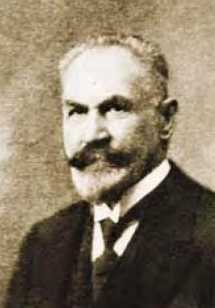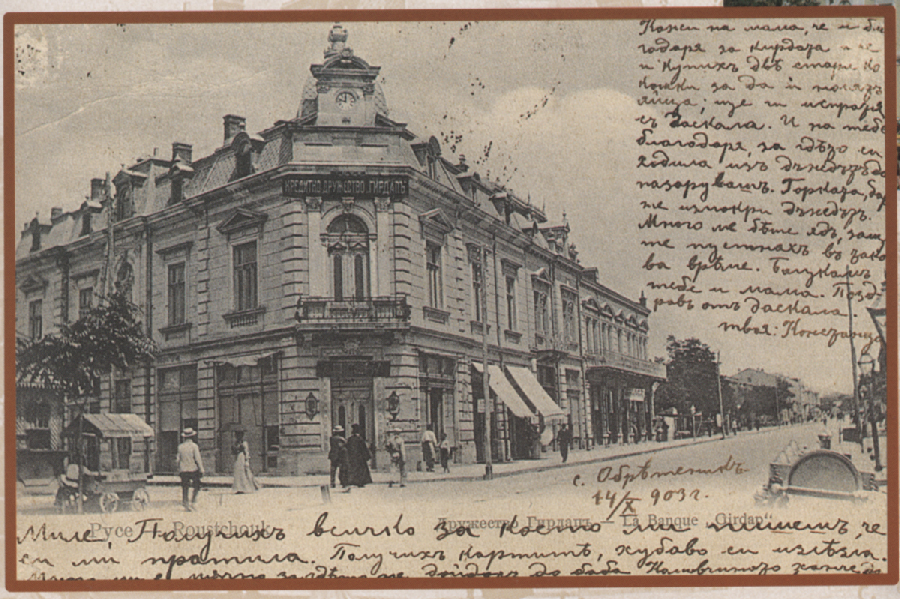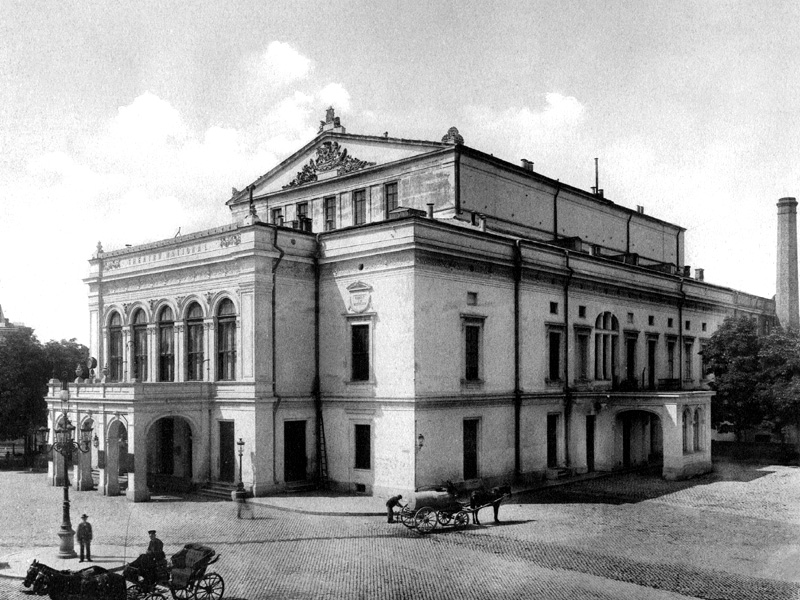|
Dohodno Zdanie
Dohodno Zdanie ( bg, Доходно здание; literally: "profitable building") is an imposing Neoclassical edifice on Freedom Square in the city centre of Rousse, Bulgaria, built in 1898–1902 to accommodate the local theatre performances. The name originates from the construction's purpose: to provide the school board of trustees with funds by means of the theatre hall, library, casino and shop rents. Today, Dohodno Zdanie is a cultural monument and one of the symbols of Rousse. A six-member city commission accepted the requirements that the project for the building should be completed in 1896. Those included no less than nine shops, two storeys, a 200 square metre casino, a 300 square metre theatre hall and a 200 square metre library hall. An authoritative jury discussed 15 projects that participated in a contest for the construction of the building, and chose the ''Voilà une idée'' project by Austrian architect Peter Paul Brang on 20 February 1897. An auction on 26 Janua ... [...More Info...] [...Related Items...] OR: [Wikipedia] [Google] [Baidu] |
Ruse TodorBozhinov 09
Ruse may refer to: Places *Ruse, Bulgaria, a major city of Bulgaria **Ruse Municipality **Ruse Province ** 19th MMC – Ruse, a constituency *Ruše, a town and municipality in north-eastern Slovenia * Ruše, Žalec, a small settlement in east-central Slovenia *Ruse, New South Wales, a suburb of Sydney, Australia *Ruse Peak, Antarctica Art and entertainment * Ruse (book), ''Ruse: Undercover with FBI Counterintelligence'', an autobiography by Robert Eringer * ''Ruse'' (comics), a comic book published by CrossGen *''R.U.S.E.'', a 2010 video game *"Ruse", a song by Chevelle from ''Hats Off to the Bull'' *The Ruse, indie rock band based in Los Angeles, California Education *James Ruse Agricultural High School, a selective high school in Sydney, Australia *University of Ruse, a public university in Ruse, Bulgaria Other uses *ruse, a deception, an action or plan which is intended to deceive someone, for example a ruse of war. * USS ''PC-472'', a US Navy submarine chaser transferred to ... [...More Info...] [...Related Items...] OR: [Wikipedia] [Google] [Baidu] |
Neoclassicism
Neoclassicism (also spelled Neo-classicism) was a Western cultural movement in the decorative and visual arts, literature, theatre, music, and architecture that drew inspiration from the art and culture of classical antiquity. Neoclassicism was born in Rome largely thanks to the writings of Johann Joachim Winckelmann, at the time of the rediscovery of Pompeii and Herculaneum, but its popularity spread all over Europe as a generation of European art students finished their Grand Tour and returned from Italy to their home countries with newly rediscovered Greco-Roman ideals. The main Neoclassical movement coincided with the 18th-century Age of Enlightenment, and continued into the early 19th century, laterally competing with Romanticism. In architecture, the style continued throughout the 19th, 20th and up to the 21st century. European Neoclassicism in the visual arts began c. 1760 in opposition to the then-dominant Rococo style. Rococo architecture emphasizes grace, ornamentati ... [...More Info...] [...Related Items...] OR: [Wikipedia] [Google] [Baidu] |
Rousse
Ruse (also transliterated as Rousse, Russe; bg, Русе ) is the fifth largest city in Bulgaria. Ruse is in the northeastern part of the country, on the right bank of the Danube, opposite the Romanian city of Giurgiu, approximately south of Bucharest, Romania's capital, from the Bulgarian Black Sea Coast and from the capital Sofia. Thanks to its location and its railway and road bridge over the Danube (Danube Bridge), it is the most significant Bulgarian river port, serving an important part of the international trade of the country. Ruse is known for its 19th- and 20th-century Neo-Baroque and Neo-Rococo architecture, which attracts many tourists. It is often called the Little Vienna. The Ruse-Giurgiu Friendship Bridge, until 14 June 2013 the only one in the shared Bulgarian-Romanian section of the Danube, crosses the river here. Ruse is the birthplace of the Nobel laureate in Literature Elias Canetti and the writer Michael Arlen. Ruse is on the right bank of the rive ... [...More Info...] [...Related Items...] OR: [Wikipedia] [Google] [Baidu] |
Bulgaria
Bulgaria (; bg, България, Bǎlgariya), officially the Republic of Bulgaria,, ) is a country in Southeast Europe. It is situated on the eastern flank of the Balkans, and is bordered by Romania to the north, Serbia and North Macedonia to the west, Greece and Turkey to the south, and the Black Sea to the east. Bulgaria covers a territory of , and is the sixteenth-largest country in Europe. Sofia is the nation's capital and largest city; other major cities are Plovdiv, Varna and Burgas. One of the earliest societies in the lands of modern-day Bulgaria was the Neolithic Karanovo culture, which dates back to 6,500 BC. In the 6th to 3rd century BC the region was a battleground for ancient Thracians, Persians, Celts and Macedonians; stability came when the Roman Empire conquered the region in AD 45. After the Roman state splintered, tribal invasions in the region resumed. Around the 6th century, these territories were settled by the early Slavs. The Bulgars, led by Asp ... [...More Info...] [...Related Items...] OR: [Wikipedia] [Google] [Baidu] |
Austria
Austria, , bar, Östareich officially the Republic of Austria, is a country in the southern part of Central Europe, lying in the Eastern Alps. It is a federation of nine states, one of which is the capital, Vienna, the most populous city and state. A landlocked country, Austria is bordered by Germany to the northwest, the Czech Republic to the north, Slovakia to the northeast, Hungary to the east, Slovenia and Italy to the south, and Switzerland and Liechtenstein to the west. The country occupies an area of and has a population of 9 million. Austria emerged from the remnants of the Eastern and Hungarian March at the end of the first millennium. Originally a margraviate of Bavaria, it developed into a duchy of the Holy Roman Empire in 1156 and was later made an archduchy in 1453. In the 16th century, Vienna began serving as the empire's administrative capital and Austria thus became the heartland of the Habsburg monarchy. After the dissolution of the H ... [...More Info...] [...Related Items...] OR: [Wikipedia] [Google] [Baidu] |
Peter Paul Brang
Peter Paul Brang (1852–1925) was a Viennese architect who worked in what are today the Czech Republic and Slovenia, as well as in Bulgaria and Romania. Some of his works include the City Baths in Liberec (1901–1902) and Ústí nad Labem (1905–1908) in the Czech Republic, the Celje Hall (''Celjski dom'', ''Deutsches Haus'') in Celje, Slovenia (1905–1906), Dohodno Zdanie in Rousse (1897–1900), the Dimitar Hadzhivasilev State High School of Commerce in Svishtov (1895), the Italian (former Austrian) embassy (1883) at www.ambsofia.esteri.it and what is today the headquarters on 2 [...More Info...] [...Related Items...] OR: [Wikipedia] [Google] [Baidu] |
Bulgarian Lev
The lev ( bg, лев, plural: / , ; ISO 4217 code: BGN; numeric code: 975) is the currency of Bulgaria. In old Bulgarian the word "lev" meant "lion", the word 'lion' in the modern language is ''lаv'' (; in Bulgarian: ). The lev is divided in 100 ''stotinki'' (, singular: , ). Stotinka in Bulgarian means "a hundredth" and in fact is a translation of the French term "centime". Grammatically the word "stotinka" comes from the word "sto" (сто) - a hundred. Since 1997, the lev has been in a currency board arrangement with initially the Deutsche Mark at a fixed rate of BGL 1000 to DEM 1. After the introduction of the euro and the redenomination of the lev in 1999, this has resulted in a fixed rate to the euro of BGN 1.95583 : EUR 1. Since 2020, the lev has been a part of the European Exchange Rate Mechanism (ERM II). The lev is scheduled to be supplanted by the euro on 1 January 2024. Etymology The currency's name comes from the archaic Bulgarian word "lev," which meant "lionhtt ... [...More Info...] [...Related Items...] OR: [Wikipedia] [Google] [Baidu] |
Girdap
Girdap or Ghirdap ( bg, Гирдап) was the first privately owned Bulgarian bank. Established in Ruse in 1881, until its closure in 1925 it was one of the two large Bulgarian banks which relied on capital that was both private and local, along with the Bulgarian Commercial Bank. Prior to the Balkan Wars and World War I, Girdap was among the six largest banks in Bulgaria, and during the wars its financial group was the most influential in the country. History Early years Girdap's constituent assembly was held on 1 December 1881, less than four years after the Liberation of Bulgaria from Ottoman rule and the establishment of the Principality of Bulgaria. At the time, the northeastern Bulgarian city of Ruse was a major economic hub. Ruse prospered due to its role as a major port on the Danube, its rapid industrial development and its well-established ties with Central Europe along that river. Banking, however, was a new concept, as most people employed the services of money ... [...More Info...] [...Related Items...] OR: [Wikipedia] [Google] [Baidu] |
Romania
Romania ( ; ro, România ) is a country located at the crossroads of Central Europe, Central, Eastern Europe, Eastern, and Southeast Europe, Southeastern Europe. It borders Bulgaria to the south, Ukraine to the north, Hungary to the west, Serbia to the southwest, Moldova to the east, and the Black Sea to the southeast. It has a predominantly Temperate climate, temperate-continental climate, and an area of , with a population of around 19 million. Romania is the List of European countries by area, twelfth-largest country in Europe and the List of European Union member states by population, sixth-most populous member state of the European Union. Its capital and largest city is Bucharest, followed by Iași, Cluj-Napoca, Timișoara, Constanța, Craiova, Brașov, and Galați. The Danube, Europe's second-longest river, rises in Germany's Black Forest and flows in a southeasterly direction for , before emptying into Romania's Danube Delta. The Carpathian Mountains, which cross Roma ... [...More Info...] [...Related Items...] OR: [Wikipedia] [Google] [Baidu] |
National Theatre Bucharest
The National Theatre Bucharest ( ro, Teatrul Naţional "Ion Luca Caragiale" București) is one of the national theatres of Romania, located in the capital city of Bucharest. Founding It was founded as the ''Teatrul cel Mare din București'' ("Grand Theatre of Bucharest") in 1852, its first director being Costache Caragiale. It became a national institution in 1864 by a decree of Prime Minister Mihail Kogălniceanu, and was officially named as the National Theatre in 1875; it is now administered by the Romanian Ministry of Culture. In April 1836, the ''Societatea Filarmonica'' — a cultural society founded by Ion Heliade Rădulescu and Ion Câmpineanu — bought the Câmpinencii Inn to build a National Theatre on the site, and began to collect money and materials for this purpose. In 1840, Obşteasca Adunare (the legislative branch established under the terms of the Imperial Russian-approved ''Organic Statute'') proposed to Alexandru II Ghica, the Prince of Wallachia, a project ... [...More Info...] [...Related Items...] OR: [Wikipedia] [Google] [Baidu] |
Buildings And Structures In Ruse, Bulgaria
A building, or edifice, is an enclosed structure with a roof and walls standing more or less permanently in one place, such as a house or factory (although there's also portable buildings). Buildings come in a variety of sizes, shapes, and functions, and have been adapted throughout history for a wide number of factors, from building materials available, to weather conditions, land prices, ground conditions, specific uses, monument, prestige, and aesthetic reasons. To better understand the term ''building'' compare the list of nonbuilding structures. Buildings serve several societal needs – primarily as shelter from weather, security, living space, privacy, to store belongings, and to comfortably live and work. A building as a shelter represents a physical division of the :Human habitats, human habitat (a place of comfort and safety) and the ''outside'' (a place that at times may be harsh and harmful). Ever since the first cave paintings, buildings have also become objects or ... [...More Info...] [...Related Items...] OR: [Wikipedia] [Google] [Baidu] |
Theatres In Bulgaria
Theatre or theater is a collaborative form of performing art that uses live performers, usually actors or actresses, to present the experience of a real or imagined event before a live audience in a specific place, often a stage. The performers may communicate this experience to the audience through combinations of gesture, speech, song, music, and dance. Elements of art, such as painted scenery and stagecraft such as lighting are used to enhance the physicality, presence and immediacy of the experience. The specific place of the performance is also named by the word "theatre" as derived from the Ancient Greek θέατρον (théatron, "a place for viewing"), itself from θεάομαι (theáomai, "to see", "to watch", "to observe"). Modern Western theatre comes, in large measure, from the theatre of ancient Greece, from which it borrows technical terminology, classification into genres, and many of its themes, stock characters, and plot elements. Theatre artist Patrice Pavi ... [...More Info...] [...Related Items...] OR: [Wikipedia] [Google] [Baidu] |






